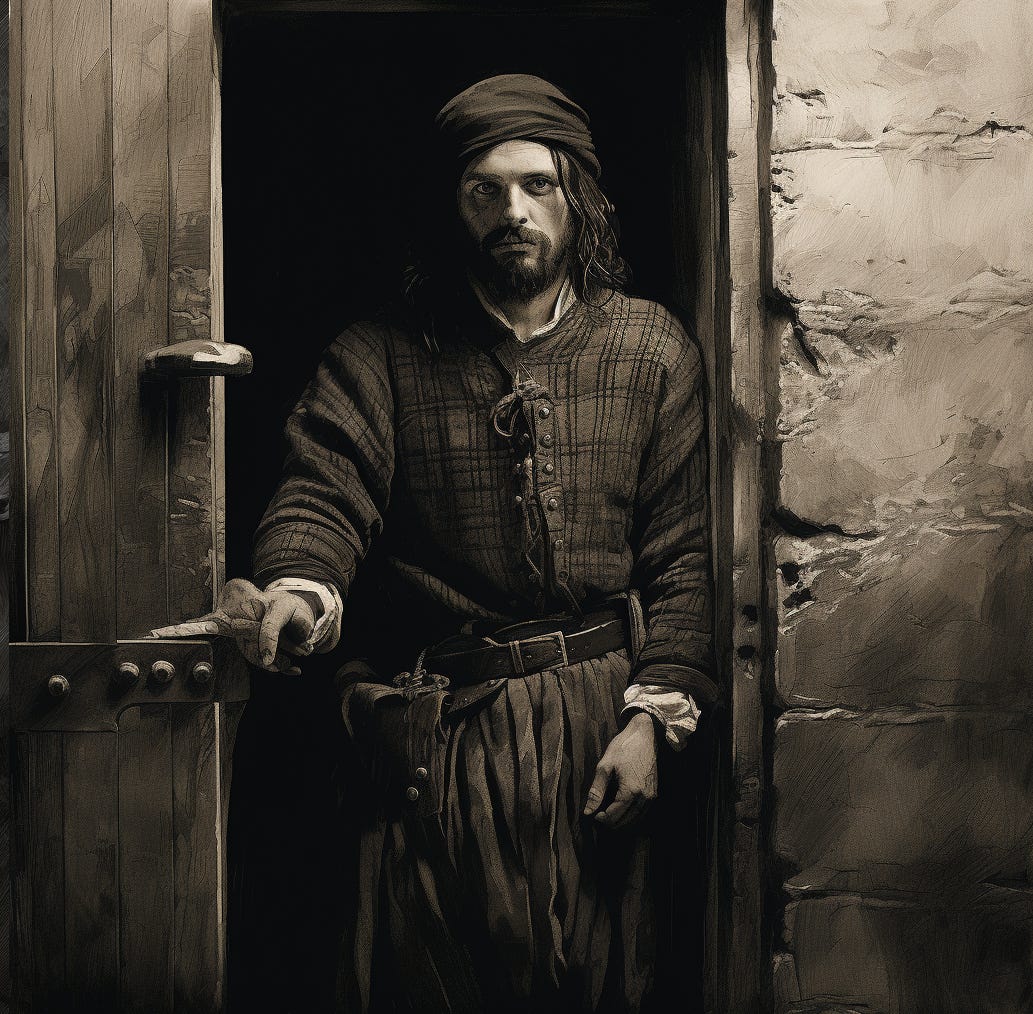The Capture of John Ogilvie: A Tale of Intrigue and Religious Persecution
In the tumultuous times of 17th-century Scotland, the religious landscape was marred by political strife and tensions between the Protestant majority and the Roman Catholic minority. Amid this turmoil, one man's journey would become a symbol of devotion, intrigue, and religious persecution. His name was John Ogilvie, a Jesuit of Scottish descent.
A Daring Return to Scotland
After a lengthy absence of twenty-two years, John Ogilvie, a son of Walter Ogilvie of Drum, returned to his homeland in May 1615. His mission was clear: to promote the growth of the Roman Catholic religion in a country where Protestantism was the dominant faith. At the time, Scotland was a hotbed of religious and political unrest, with ongoing tensions between the followers of the Church of Rome and the Protestant establishment.
Ogilvie was one of those fervent individuals who willingly took great risks to further his cause, even if it meant endangering his life. The early 17th century was marked by various plots and schemes by the followers of the Church of Rome, from the infamous Spanish Armada to the Gunpowder Plot. It was a time when rumors of Catholic conspiracies were never far from the surface.
A Perilous Undertaking
During the reign of King James, rumors of Catholic plots were rampant, both before and after his accession to the English throne. The authorities were on high alert, and it was evident that a new conspiracy was on the verge of being put into action. This prompted the early detection and execution of many Jesuit emissaries.
John Ogilvie's capture was a significant moment in this period of heightened vigilance. He was taken into custody in Glasgow, and his trial, which was not recorded in the Books of Adjournal, was reported to the Privy Council. It was evident that this case was meant to be widely publicized, with carefully revised language designed to be intelligible to an English audience. The trial, as we shall see, was a remarkable and dramatic event in itself.
The Trial of John Ogilvie
A Special Commission was granted to the Provost and Bailies of Glasgow, who had jurisdiction over Ogilvie's capture. The trial was attended by several prominent individuals, and the proceedings were meticulous. Ogilvie was charged with promoting the Roman Catholic religion, and he was not one to back down.
One of the most significant moments of the trial was Ogilvie's response to a crucial question: Could the Pope depose an excommunicated king and release his subjects from their oath of allegiance? Ogilvie, unwavering in his faith, responded that he considered the King and his Council to be incompetent judges in this matter. He insisted on addressing the issue before the Pope, his ultimate authority. This declaration sealed his fate.
The Execution
John Ogilvie's trial led to a guilty verdict. He fearlessly professed his unwavering loyalty to the Pope's authority and disregard for the King's authority when it conflicted with the Pope's. Yet, despite his strong resolve during the trial, Ogilvie's courage wavered when he faced the scaffold. He died without being able to offer a commendation to God as the minister had requested, instead doing so at the hangman's request.
His execution raised questions about the true motive behind it. Some saw it as an attempt to assert the King's authority over the Catholic minority, while others believed it was meant to intimidate the more radical elements within the ministry.
John Ogilvie, a fervent Jesuit who returned to his homeland to promote his faith, was captured and tried in a period of great religious and political turmoil. His unwavering commitment to the Pope's authority and the Catholic faith ultimately led to his execution, making him a symbol of religious devotion and persecution during a tumultuous era in Scotland's history.





